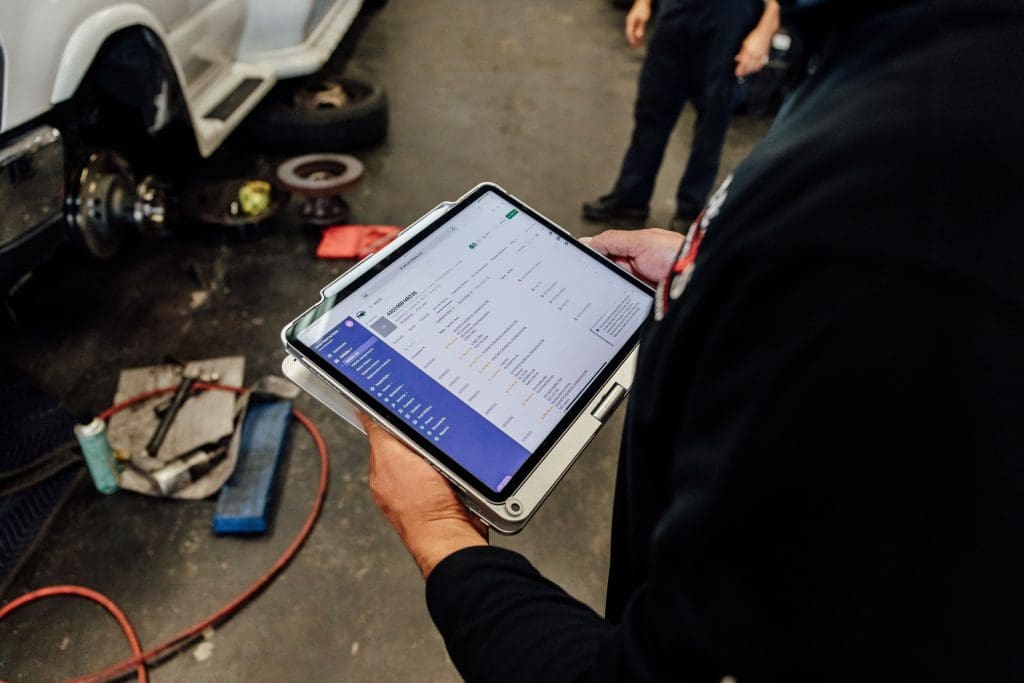
Guest Post
Maintaining a fleet is a formidable undertaking with diverse and complex challenges. While the financial investment in maintaining these assets is significant, the advantages of preventive maintenance (PM) are clear. However, many organizations grapple with a seemingly simple task — maintaining a consistent maintenance routine. Fleet technologies, like fleet management software (FMS), can revolutionize maintenance practices to ensure uptime, reduce repair costs and extend the life of your essential business assets.
Insights into Fleet Management and Maintenance Challenges
Optimizing fleet operations is not just a matter of cost savings but can significantly impact your organization’s competitive edge.
“There are just such huge competitive advantages to be gained by looking at your fleet operations and improving your efficiency,” explains Dan Simpson, product marketing manager, Fleetio.
“When a fleet manager’s dealing with collaboration that’s really dysfunctional, it’s just impossible for them to know what’s going on at their organization. But software does give you the opportunity to pull everyone in and collaborate in one place,” says Simpson.
There are four core challenges Simpson discusses that fleets commonly face:
- Limited visibility: Limited visibility into fleet operations hampers efficient decision-making. Fleet managers might intuitively sense when a vehicle needs maintenance, but without concrete data, making a compelling case for these repairs can be challenging. To combat this, Simpson recommends centralizing collaboration within the fleet, ensuring that communication and issue reporting happens in one place. Software solutions can facilitate this by enabling drivers and mechanics to complete inspections and work orders while allowing seamless communication. Reports can be generated in real-time, providing the essential visibility into fleet operations.
- Data management: Effective data management is essential for informed decisions. Fleets often find themselves in one of two extremes — data overload, where an abundance of data becomes overwhelming, or data famine, where crucial information is scarce. The path to effective data management starts with identifying all existing data sources and potential gaps. Reducing processes that lead to data duplication and leveraging data automation helps consolidate data into a central repository. Training your team on efficient data handling is also critical.
- Asset downtime: Asset downtime poses a significant challenge, leading to additional costs, lost opportunities and even reputational damage. The causes vary from overuse and abuse to inconsistent maintenance and factory faults. The transition to proactive maintenance is the key here. Empower your drivers to play a role in identifying issues early through regular inspections and issue reporting. Analyze data to identify common asset issues, allowing you to address recurring problems effectively. Training your mechanics to work proactively and complete repairs quickly, and setting key performance indicators (KPIs) can significantly reduce asset downtime.
- Planning for the future: Without visibility into your fleet, planning for the future becomes an arduous task. It’s challenging to determine asset replacement strategies, set PM schedules, staff your maintenance team adequately or establish a trustworthy budget. By addressing the challenges related to visibility and data management, you’ll be better equipped to plan for the future. Automation and data consolidation enable better insights into trends and historical data, which, in turn, supports strategic planning.
Benchmarking and Performance Metrics

Simpson underscores the importance of setting KPIs and sharing benchmark data across your organization. Fleet KPIs can encompass various metrics, including total cost of ownership, return on investment, cost per mile, on-time maintenance completion rate, repair turnover and asset utilization. Benchmarking these metrics allows stakeholders to understand how the fleet is performing and aids in setting data-driven goals.
While the challenges of fleet management are multifaceted, and the financial stakes are high, PM is the linchpin for cost-effective, efficient fleet management. The role of fleet technology and software cannot be overstated, providing the tools and solutions necessary to overcome these challenges. Simpson emphasizes the importance of aligning technology with real-world operational needs, making sure that the solutions empower drivers, mechanics and fleet managers to work efficiently.
By centralizing collaboration, consolidating data, embracing proactive maintenance and benchmarking performance metrics, organizations can navigate the complexities of fleet management successfully. Whether you’re overseeing a small, dedicated fleet or managing an extensive array of specialized vehicles, these best practices and technologies offer a pathway to driving success in fleet management and maintenance.
This information came from a session during the 2023 ELEVATE conference and expo. Don’t miss ELEVATE in Charlotte, North Carolina, on Nov. 3-6, 2024.



